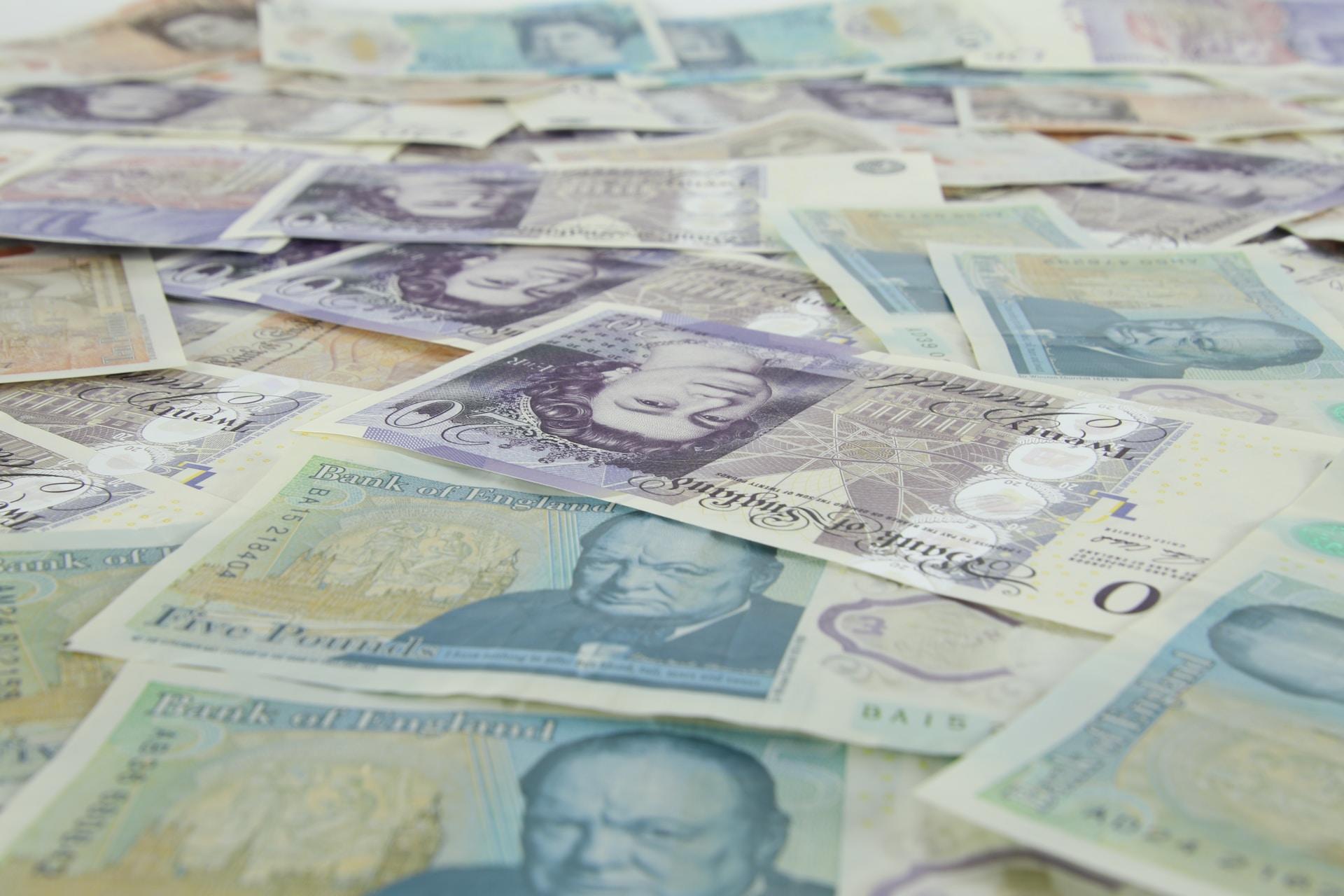Over the last 20 years, the United Kingdom's economy has weathered many shocks. The 2008 financial meltdown, Brexit and the coronavirus pandemic rocked the entire world. Yes, even the specifically British Brexit rippled global markets.
The UK grappled with further destabilising events such as the cost of living crisis and the disastrous 2022 mini-budget. That last caused the pound sterling's value to crash. The Great British pound (GBP) hit an all-time low against the US dollar (USD). Pound-dollar parity - how the pound stacks up against the dollar is the standard measure of our currency's worth.
In each instance, it seemed that our Central Bank and economic decision-makers had not foreseen these upheavals. You might argue that it's hard to plan for unforeseen events and you'd be right, but only to a certain extent.
The 2008 crash was not unforeseen; global financial markets gave off warning signals for up to two years before the fall. We might have sleepwalked into the COVID-induced economic turmoil; most nations did. But the trouncing could have been prevented. And Brexit should have been a planned decoupling but everything ended in disarray.
It's no wonder, then, that Tony Danker called for the UK to formulate its first-ever economic plan. He is the former director-general of Britain's largest business interest group. He made his pitch for the UK to set economic goals in 2021.
We'll go over Mr Danker's talking points later. For now, we have to know what factors we should consider to formulate such a plan:
- reasons for building a resilient economy
- the pros and cons of a strong sterling currency
- pound-dollar parity and global monetary policy's future
- economic challenges our plan must address

A Historical View of the British Pound Sterling
The British currency enjoys the distinction of being the world's oldest currency still in circulation. The first silver coins were minted in 800 CE; they followed the Roman currency distribution method. Thus, the UK spent silver shillings, pennies and later, pounds of sterling silver.
That system prevailed until 1971 after which our currency became decimalised. Since then, rather than a penny being worth 1/240th of a pound, it's worth 1/100th of a pound. That change made accounting much simpler.
Regardless of distribution, we find little discipline in spending across the pound's long history. The Tudor period was notorious for its excesses but other Houses were equally profligate. Financing wars was one reason for currency reforms during the Middle Ages. It's also how the Bank of England (BoE) became our country's Central Bank.
The GBP has a long history but historical practices don't serve our British pound well. To this day, our country doesn't seem to have either a unified economic plan or a firm monetary policy. Everything seems to be knee-jerk, as the fallout from recent economic quakes reveals.

A Strong Pound: a Good Idea?
People often believe a strong currency reflects a strong economy. Most of the time, the opposite is true: a strong economy prefers a weaker currency. That's because if a country's currency is strong, its exports will cost more. If a currency is too strong, importers will go elsewhere to buy more reasonably priced products.
Countries control their currencies' strength in different ways for that very reason. For instance, Japan and Switzerland control their currencies with market interventions. The US also intervenes in markets but that country mainly practises Quantitative Easing (QE) or Tightening (QT) to regulate its currency's strength.
The UK has largely followed the US's lead, especially over the past two decades. QE/QT are monetary policy initiatives meant to stimulate the economy (QE) or control inflation (QT), as needed. Right now, the US is in a QT period to try reining in inflation. Around the world, investors are complaining that the US is pricing its investments out of their range.
From this, we see that the ideal balance is a strong economy - lots of goods produced and shipped, and a controlled currency. That's the economic model China has long applied and it's served that country well. Even the International Monetary Fund (IMF) concedes that China's projected economic growth will outpace other nations' in 2024.
Still, a strong currency offers a few advantages, two of which the UK needs right now. Lower inflation would mean more money in our pockets. Lower funding costs attract international investment, allowing greater economic stability.
Historically, the pound sterling has always been a strong currency. When the European Union adopted the single-currency system, the UK retained its sovereign currency. However, right now, our strength is our undoing.
How does the USD get away with its strength, then? The US doesn't need to balance its currency with other nations' abilities to buy its manufactured goods. That country doesn't export much of anything. The dollar's strength comes from its pervasiveness in global trade.
So if a strong pound discourages export and international trade, what must businesses do to adapt? Focusing solely on the pound-dollar parity and how strong our currency is limits opportunity. Businesses, especially small and medium enterprises (SMEs) must adapt to uncertainty. Because from here out, that seems to be the only economic constant.

The Future of Global Monetary Policy
As I write this, the world finds itself amidst a cavalcade of impactful events. The East-West divide is visible once again, its flashpoint is currently in Ukraine, with daily provocations lobbed China's way. In West Asia, long-simmering conflicts have exploded. These crises impact every aspect of economic activity.
The US has its hands in all of them. But that country itself is a leading cause of global economic and monetary instability. The official US national debt tops $34 trillion though many suspect that number is much higher. Around the world, countries are shedding US dollar reserves at an alarming rate, even as the US Treasury hopes to sell ever more bonds.
China's economic growth outpaces the US's but the dollar is still the world's reserve currency - despite the shedding. However, the US economy is too fragile to sustain its preeminent position (and its debt) for much longer. We must develop a system to adapt to these emerging global realities. Consider these five possibilities.
The Dollar Remains
- the US continues to impose its will on the global economy
- other nations challenge US supremacy, leading to conflict
- the global economy follows the US economy
A Different Currency
- economic instability through a long transition phase
- parallel financial systems and new infrastructure
- securing consensus and trust
Multipolarity
- two or more currencies accepted as reserves
- competing monetary systems and infrastructure
- emphasis on regionalisation (monetary centres in regions around the world)
Return to the Gold Standard
- end the credit/debt cycle;
- unequal distribution; nations with less gold are disadvantaged
- fosters a "Who has the gold makes the rules" mentality
Stateless Currency
- a digital currency with its value tied to some universal economic value
- each nation's currency value ties in with this universal currency
- used for international trade
Two more possibilities to consider: an IMF-generated digital 'basket of currencies' used only for international trade. And a complete meltdown of global economic and monetary systems.
As things stand now, each of these scenarios is possible. So businesses and governments must plan for each one. Let's look at some strategies our government may consider to protect our GBP. And what businesses might think about, going forward.
Economic Strategies to Consider
To meet and triumph over global economic challenges, we must first fix systemic problems in our economy. Regional inequality and our government's failure to invest - in productive environments, infrastructure and skills development, top that list.
Typically, our government focuses investments in the London business sector, neglecting the rest of England and the whole of the UK, more broadly. That means that, outside of London, workers have fewer opportunities to earn well. Regions outside of London are less developed, too. That poses a challenge for businesses that want to set up shop outside the city.
And then, we must consider emerging technologies. Transitioning to green energy and a digital environment demands infrastructure and workers capable of building and maintaining it. Thus, we must step up educational initiatives. But here again, the government lacks a plan.
Public/private investments have backfired. The government invests plenty in research and development of new technologies. However, the rewards from these developments go to privately-owned companies. It's time to claw back some of the gains from those investments; to recycle this capital back into the public domain.
For all of this and everything else we need to do, we must find consensus. Between warring political parties, of course, but also between the business and financial communities. Between the public and private sector. Between achieving our stated economic goals and what we're willing to sacrifice to reach them.
Because the world will move on whether or not we're ready for it to. So we need the infrastructure to implement these changes, including the impending digital currency systems. Our government should prioritise spending on developing these systems lest we fall behind these global initiatives.
















